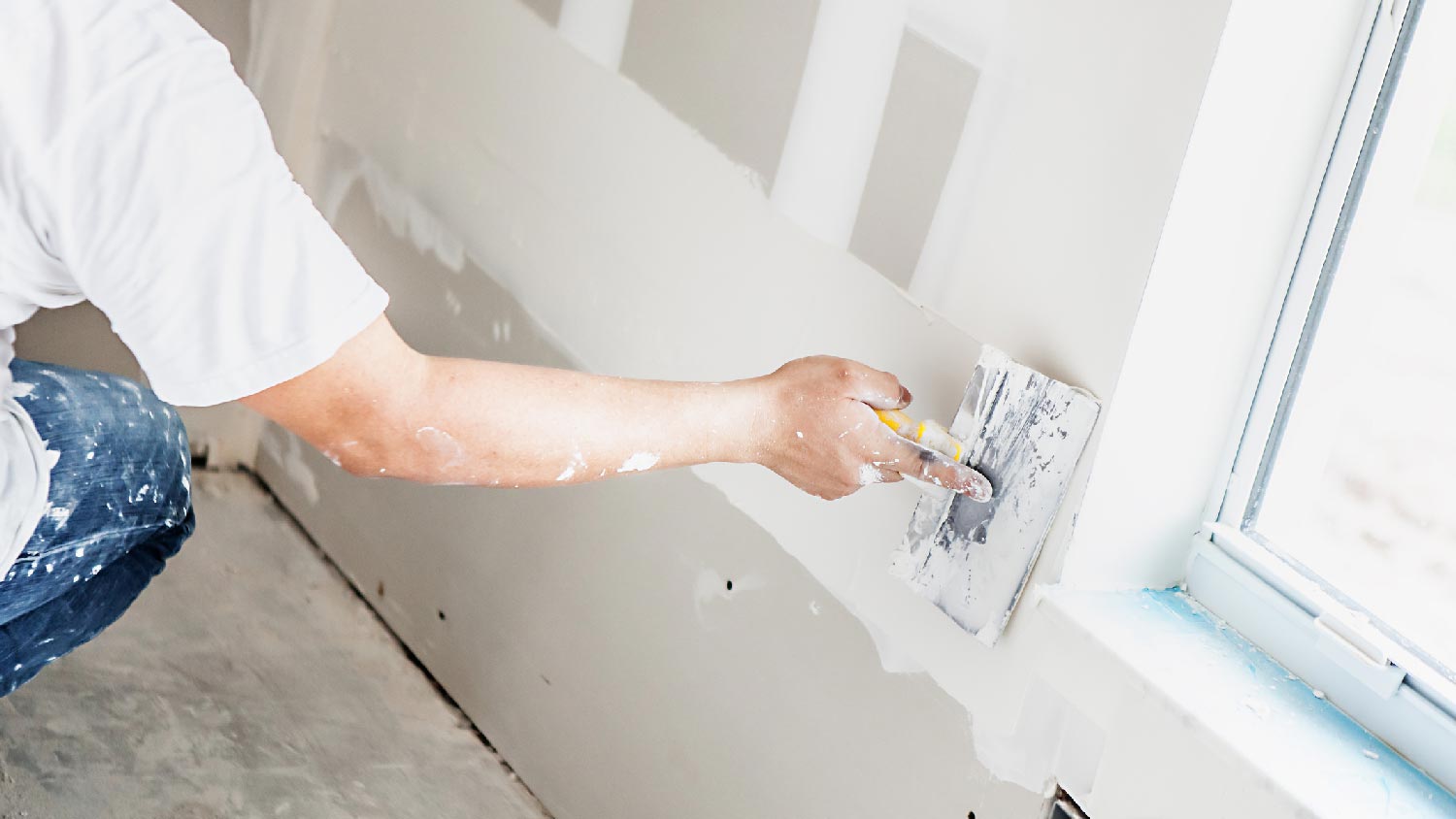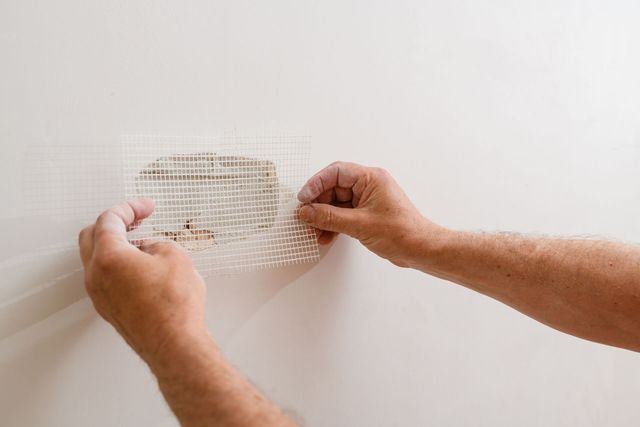Transform your home professionally with Drywall Installation Ogden Utah and premium painting finishes.
Step-by-Step Approaches to Getting Flawless Drywall Repair Service and Installation
Accomplishing perfect drywall repair work and installment requires an organized method. It entails understanding the different kinds of drywall and the tools necessary for the task. Correct location preparation is essential prior to starting any kind of work. drywall contractors. Each action, from covering holes to setting up brand-new sheets, needs attention to detail. The procedure does not finish with installation; completing methods are essential for a sleek appearance. The following actions will ensure a smooth result, but exactly what do they require?
Recognizing Drywall Kind and Equipment Needed

The installation tools are equally essential. An energy blade is vital for cutting drywall sheets, while a drywall saw can assist in making precise cuts for components or electrical outlets. T-squares ensure exact dimensions, and drywall screws or nails secure the panels to wall surface studs. In addition, a drywall lift can assist in the setup of large sheets, reducing physical stress. Familiarity with these devices and types appreciably contributes to the performance and high quality of drywall tasks.
Preparing the Area for Repair Service or Setup
Preparing the area for drywall fixing or setup is essential to ensure a reliable and smooth process. Initially, the surrounding space must be cleared of furnishings and various other barriers to provide adequate functioning area. This not just assures safety however additionally stops damages to items. Next off, it is vital to cover the flooring with ground cloth to capture any debris or dirt generated during the job.
Furthermore, the walls should be checked for any type of loose paint or wallpaper that may interfere with adhesion. Getting rid of these components creates a clean surface area for the brand-new drywall. Prior to start, it is a good idea to turn off power to electric outlets or fixtures in the vicinity. Making sure sufficient lighting in the workspace will further boost presence and emphasis throughout the repair work or installment process. drywall contractor. By carefully preparing the area, one lays the groundwork for a successful drywall project
Step-by-Step Process for Patching Holes

Patching openings in drywall calls for an organized technique to ensure a seamless repair work. The very first step entails reviewing the dimension of the hole. For small openings, a patching substance may be enough, while bigger openings require a patch. Next off, the broken location needs to be cleansed and prepared by getting rid of any kind of loosened particles.
For tiny holes, applying spackling compound with a putty knife is advised, smoothing it over the hole and feathering the edges. As soon as completely dry, fining sand the location ensures a smooth surface. For larger holes, a drywall spot need to be reduced to size, placed over the opening, and secured with screws. After mounting the spot, the exact same spackling process is duplicated, complied with by fining sand.
The patched area has to be keyed and painted to match the bordering wall. This careful process assures a professional appearance and prolongs the lifespan of the repair work.
Installing New Drywall Sheets: A Comprehensive Guide
Mounting new drywall sheets calls for careful preparation and execution to ensure a durable and aesthetically appealing finish. The area has to be determined accurately to establish the number of sheets needed. It is essential to pick the best thickness, commonly 1/2-inch for indoor walls and 5/8-inch for ceilings or fire-rated applications.
Next off, the studs or structure ought to be inspected for any kind of irregularities, seeing to it they are lined up and properly spaced. When putting the drywall sheets, they should be positioned flat to decrease seams and boost structural stability. A drywall lift can be advantageous for overhanging installations.
Securing the sheets with drywall screws at suitable periods makes sure a safe installment. It is essential to countersink the screws somewhat below the surface area to plan for the ending up process. Complying with these standards will result in a strong structure, ready for the next actions in drywall ending up.
Ending Up Touches: Taping, Mudding, and Fining Sand Strategies
When the drywall sheets are safely attached, the focus moves to the complements that will certainly offer a sleek appearance. This process begins with taping, utilizing either paper or fiberglass fit together tape to cover the joints between sheets. The tape ensures a smooth shift, decreasing the threat of fracturing. Adhering to insulation, mudding is essential; a joint substance is used over the tape to load gaps and create a smooth surface area. Commonly, numerous layers are needed, every one feathery out better than the before lessen exposure.
After sufficient drying out time, fining sand is the final step in achieving a remarkable surface. A fine-grit sandpaper is utilized to smooth the dried compound, assuring there are no blemishes or bumps. Interest to detail throughout this stage is significant, as it significantly impacts the total look of the wall. Completion result should be an even, professional-looking surface all set for priming and painting.
Regularly Asked Concerns
How Do I Choose the Right Drywall Density for My Job?
To choose the appropriate drywall density, think about the project's objective, area, and architectural demands. Requirement densities consist of 1/2-inch for basic usage and 5/8-inch for fire-rated applications, guaranteeing sturdiness and compliance with building ordinance.

Can I Set Up Drywall Over Existing Drywall?
Yes, setting up drywall over existing drywall is feasible. However, it is vital to assure the underlying surface area is protected and free from damage. Appropriate fastening and consideration of density are critical for an effective setup.
What Are the Best Practices for Drywall Disposal?
The very best techniques for drywall disposal consist of recycling when possible, making use of regional waste monitoring services, and following guidelines for dangerous products if suitable. drywall contractor. Correctly sealing and identifying waste guarantees compliance and safety throughout disposal
The length of time Should I Await Mud to Dry Prior To Fining sand?
Generally, one ought to wait 1 day for drywall mud to completely dry prior to sanding. Nonetheless, drying out time can vary based on humidity and temperature level, so looking for a firm texture is a good idea before continuing.
Exist Eco-Friendly Drywall Options Available?
Yes, green drywall alternatives are offered. These choices typically utilize recycled products, low-VOC adhesives, and lasting production approaches, minimizing ecological effect while offering effective insulation and durability for different construction and improvement jobs.
An utility blade is important for reducing drywall sheets, while a drywall saw can help in making exact cuts for fixtures or electrical outlets. Preparing the area for drywall repair service or installment is essential to ensure a effective and smooth procedure. Covering holes in drywall calls for an click here organized approach to guarantee a seamless repair work. Installing new drywall sheets requires mindful preparation and implementation to assure a tough and aesthetically attractive finish. Yes, mounting drywall over existing drywall is possible.